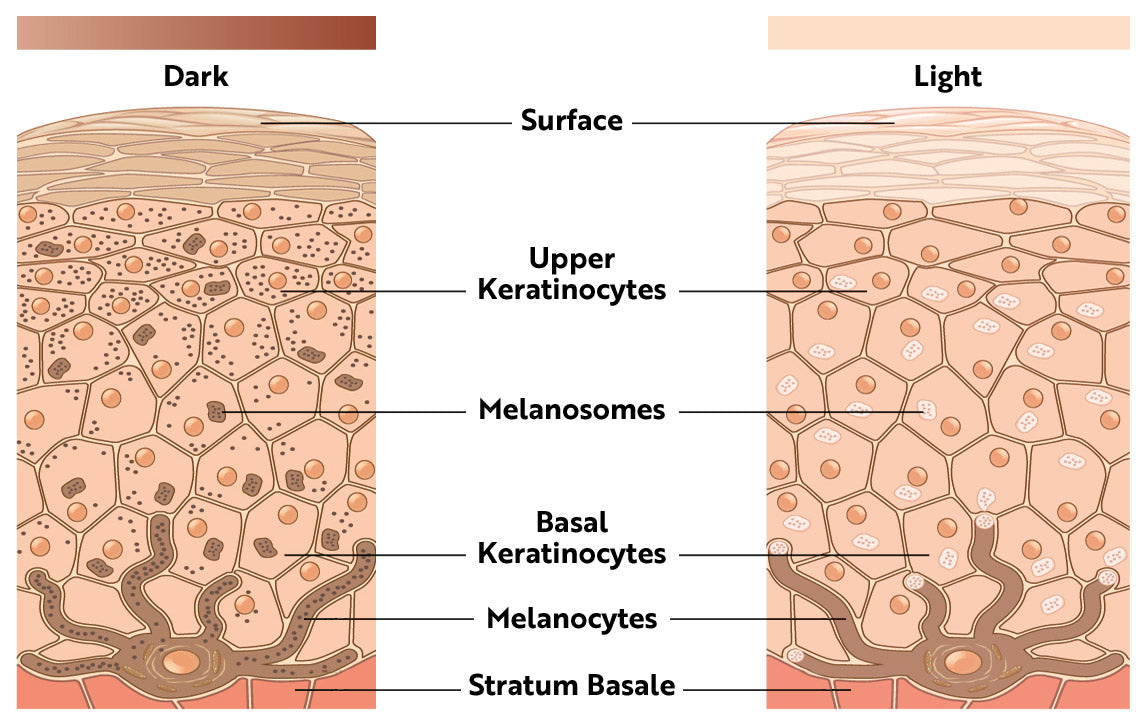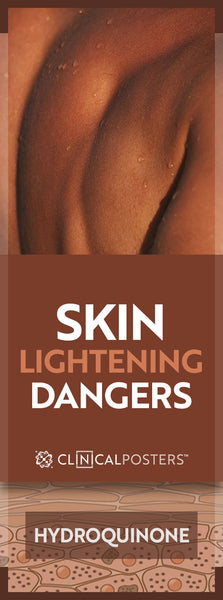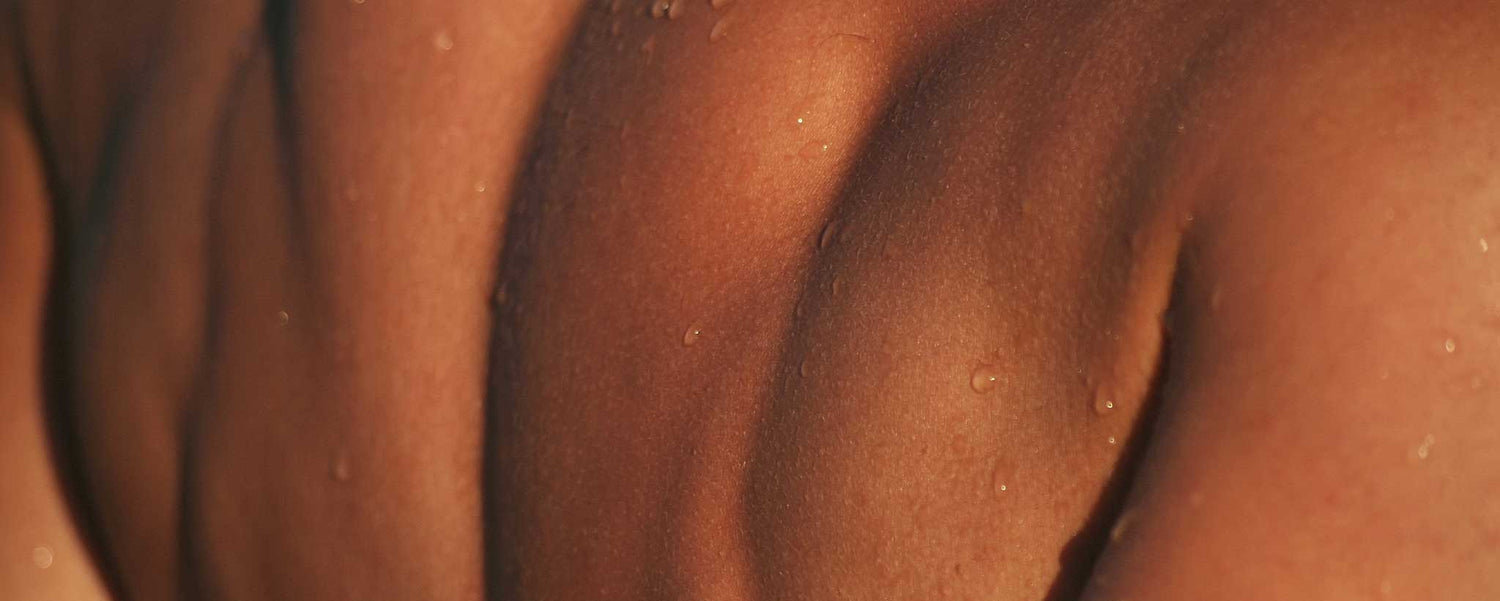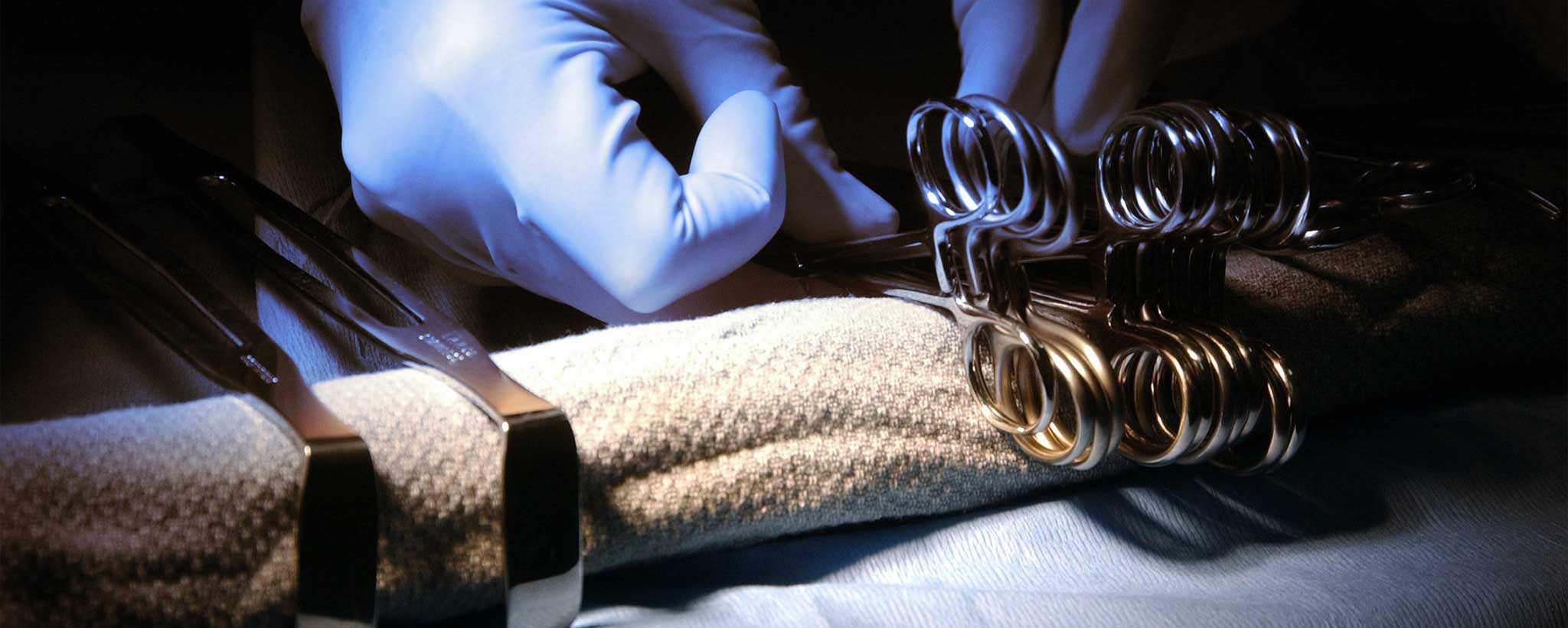Why dermatologists are cautious about prescribing hydroquinone, which is one of the most effective skin lightening agents.
Quest For Even Skin Tone
Aging initiates a battle to maintain the smooth and supple skin with which we were born. Enemies include hyperpigmentation from acne, ingrown hair, sun damage, scars, freckles, age spots, and melasma. Skin darkening may be influenced by gender, trauma, genetics, or hormonal changes.
With such an onslaught of skin attacks, doctors of dermatology are often tasked to even out mottled complexions. Though less popular today, some dermatologists may prescribe hydroquinone, which has been considered one of the most effective skin-lightening agents for many years. [1] But there are important facts to consider before use.
Hydroquinone Conditional Ban
The FDA-approved prescription drug skin-lightener, hydroquinone (up to 4 percent), was grandfathered into acceptance because it was widely used to impede melanin production before inception of the FDA.
Paradoxically, in 2006 the FDA proposed an unenforced U.S. ban on over-the-counter (OTC) sales of cosmetic products containing up to 2 percent hydroquinone. This was based largely on a 1994 report published by OSHA in the Journal of the American College of Toxicology (now known as the International Journal of Toxicology).
Any skin-lightening products containing hydroquinone are considered new drugs, according to the FDA regulations. They require FDA approval before being sold to the public and are only available with a doctor’s prescription. [2]
Dangers of Hydroquinone
Preliminary findings indicate, “hydroquinone is mutagenic and has cancer-causing potential.” The OSHA addendum states that “hydroquinone is a potent cytotoxic agent that causes mutations and alterations to DNA, and that it should not be used in any leave-on type of product; it is safe for rinse-off products when used in concentrations less than 1%.”
Because of its cytotoxic impact on the melanocytes within the skin, it is said to disrupt basic cellular processes, including DNA and RNA synthesis. [2,3] Europe, Asia and several African countries also have strict guidelines on hydroquinone use.
With lack of FDA approval, alternatives to hydroquinone cannot be labeled skin-lighteners or whiteners, so the industry often uses the term “brightener.” Products range from preparations with various hydroxy acids to red algae. The newest agents to fight melanin formation are the peptides, which appear to brighten sun-induced hyperpigmentation in half the time of other skin brighteners.
Challenges of Hydroquinone
Within the skin, melanin regulates pigmentation with racially based differences. It is more difficult to lighten skin in individuals with darker complexions due to the enhanced ability of darker skin to produce melanin.
Post-inflammatory hyperpigmentation occurring from skin trauma in dark-skinned individuals is a challenge because skin lighteners must penetrate deep within the stratum basale—the deepest layer of the five layers of the epidermis. More visible pigmentation is evident among people with lighter skin. OTC skin-brighteners are more successful among this population. [3]

Anatomical skin pigmenting: Dark-skinned people do not have more melanocytes (melanin-producing cells than lighter-skinned people. But their melanocytes are more productive, says Dr. Martin Weinstock, a professor of dermatology and epidemiology at Brown University. [3]
Mitigating the Effects of Hydroquinone
As might be expected, higher doses of hydroquinone generally produce more rapid results. Hydroquinone can also irritate the skin of some people, triggering redness or more severe pigmentation called onchronosis. Initial use is therefore recommended in a small inconspicuous area.
Treatment involves a juggling act to lighten pigmentation, stop future sun damage, suppress inflammation (usually with cortisone) [4], and even out skin tone. Ideally, damaged skin is exfoliated, new skin is protected from tanning, and melanin is inhibited. Large areas of hyperpigmentation seldom lighten uniformly with hydroquinone.
During treatment, patches of lightened skin may appear among darker areas. This can trigger additional emotional issues. Patients may be urged to seek non-irritating opaque cosmetics with UV inhibitors.

The sun emits visible light along with invisible ultraviolet-B (UVB) and -A (UVA) radiation. Sunburn is caused by UVB radiation. (Think “B” for “burn.”) Skin tanning (melanin darkening) is caused by UVA radiation.
Preventing sun damage through the application of UVA sunscreens is fundamental. [4] In fact, sunlight dramatically reduces the effects of hydroquinone.
As discussed thus far, complete hydroquinone skin lightening care includes deep cleansing, skin lightening, an anti-inflammatory drug, UV protection and possibly hypoallergenic cosmetics.
A complete course of treatment can take 4 to 12 months. Discontinuing product use or providing rest for skin may be recommended if results are not observed within an established period.
Complex subdermal chemical changes are triggered by hydroquinone. Often it is combined with other ingredients to enhance penetration, reduce sun damage, or minimize irritation. In light of potential complications, it seems prudent to pursue hydroquinone use only under the care of a qualified physician or inquire about alternative treatments such as exfoliation and dietary changes. [6]
⚠️ Skin-Lightening Cream Could Cause Nerve Damage
A California woman using a skin-lightening cream from Mexico containing toxic mercury twice a day for seven years has significant central nervous system damage. —WebMD
In the face of concerns over hydroquinone, a dermatology doctor may choose not to prescribe it or a patient can refuse treatment. There are a variety of skin-lightening alternatives—both natural and prescription—available such as vitamin A (Retin-A) and cocoa butter. [6-8]
To support the writing of scholarly articles about dermatology, ClinicalPosters sells human anatomy charts, scientific posters, and other products online. You may sponsor specific articles, become a ClinicalNovellas Member, or remit a small donation.
ClinicalPosters sells human anatomy charts, scientific posters, and other products online to offset expense of the writing useful articles about dermatology. Slide extra posters into DeuPair Frames without removing from the wall.
Show your support by donating, shopping for ClinicalPins, becoming a ClinicalNovellas Member, or leaving an encouraging comment to keep the research going.
To support the writing of useful articles about dermatology, ClinicalPosters sells human anatomy charts, scientific posters, and other products online. You may sponsor specific articles or remit a small donation.
ClinicalPosters sells human anatomy charts, scientific posters, and other products online to offset expense of the writing useful articles about dermatology. Slide extra posters into DeuPair Frames without removing from the wall.
ClinicalPosters sells human anatomy charts, scientific posters, and other products online. You may remit a small donation or become a ClinicalNovellas Member.
You can support the writing of useful articles about dermatology by sponsoring specific articles, becoming a ClinicalNovellas Member, or remitting a small donation. Visible content is optimized for device size.
This updated article was originally published on April 28, 2010.






 Romance & Health Intertwine. Fall in love with a captivating romance miniseries that explores the essence of well-being. Become a ClinicalNovellas member for heartwarming tales.
Romance & Health Intertwine. Fall in love with a captivating romance miniseries that explores the essence of well-being. Become a ClinicalNovellas member for heartwarming tales.






